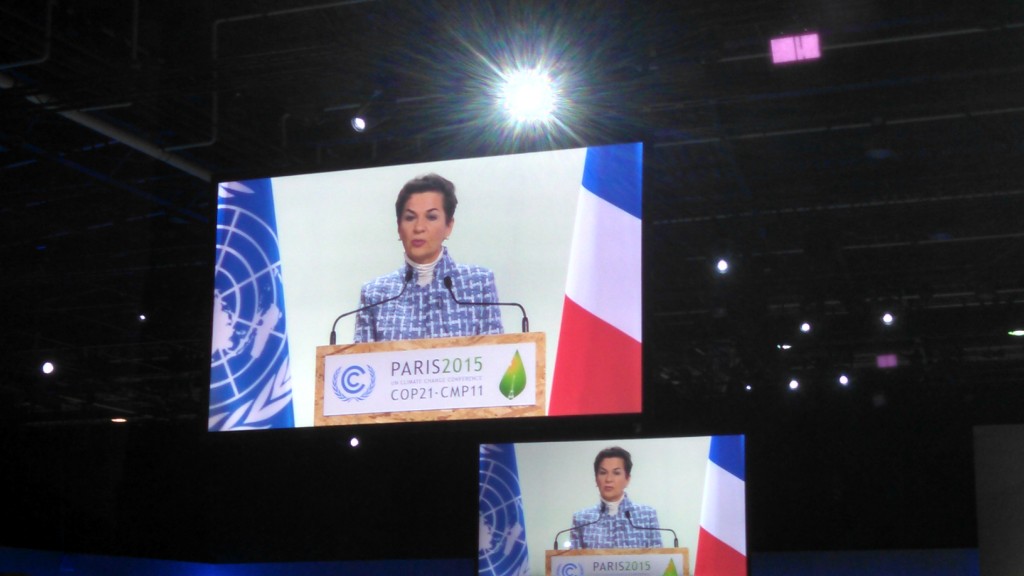We kicked off the second week of negotiations by attending the Joint High-Level Segment of the COP21/CMP11, which included both pledges and statements of views by governmental ministers and other high-level officials, including UN Secretary General Ban Ki-moon and Swarthmore alumna, UNFCCC Secretary General Christiana Figueres.
Ban Ki-moon urged delegates to heed growing calls from civil society for ambitious action on climate, citing the 800,000-strong global Global Climate March during the COPs opening weekend and the $3.4 trillion in funds divested from fossil fuels. He went on to say: “Outside these negotiating halls, there is a rising global tide of support for a strong, universal agreement. All of us have a […] duty to heed those voices.”
Figueres echoed this sentiment, emphasizing the presence of “unprecedented mobilization” for climate action. She went on to say: “The challenge we face now is to crystalize that call into a cohesive legal framework that brings the world together in action and implementation.”
Christiana Figueres addressing the High-Level Segment
In addition to the remarkable support coming from civil society, there is also an unprecedented mandate for action amongst heads of state this year. Last week, the leaders of 150 different countries gathered at the COP for the first high-level segment. This format – with the heads of state initiating the conference but leaving before the negotiations reached full swing – reverses the set-up from earlier years. (In)famously, the 2009 talks in Copenhagen resulted in failure and embarrassment for many of the world’s leaders, who came at the conclusion of the conference but were unable to salvage the stalled deal.
This year’s change in format served the dual goal of avoiding further embarrassment while also galvanizing momentum for a legally binding agreement early on in the process. This tactic appears to have worked in generating will for the process before the “sausage making” by the political negotiators begins in earnest this week. Today, at the high-level segment, we repeatedly heard the ministers referencing the first high-level segment and the strong showing from heads of state.
During his remarks this morning, COP President Larent Fabius highlighted the newly formed Paris Committee, another recent addition to traditional COP protocol. This committee is an open-ended, informal grouping of all Parties that will aim to overcome differences in the production of a first draft of the Paris agreement by December 9. While observers cannot attend the Paris Committee discussions, in the interest of transparency, the Committee’s deliberations will be teleconferenced to other meeting rooms, so that observers can, well, observe. The emphasis on inclusiveness and transparency seems to be an attempt to correct past mistakes. In the past, negotiators have relied on the formation of exclusive, small groups that deliberate behind closed doors.
But even this year’s modified format is not immune from questions of fairness and inclusivity. Specifically, delegation size becomes a particular issue for informal negotiations, which pervade different aspects of the COP meetings. Since delegation sizes from the Parties tend to differ across richer versus poorer nations, the larger delegations have higher capacity at these negotiations (as well as in others). Despite the COP’s consensus based structure, there is by no means equality in representation and voice amongst the nations represented here. The next couple of days will make clear whether this inequity within the delegations will impede the emergence of a fair and just agreement.
– Anita Desai, Stephen O’Hanlon, and Ayse Kaya
Follow us throughout the week on Twitter (@SwarthmoreCOP21) and Snapchat (SwarthmoreCOP21) to get real-time updates.
